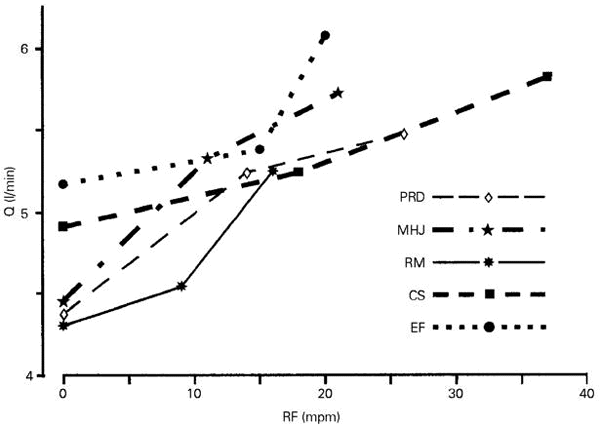Systemic blood flow (Q) was measured by echodopplercardiography in 5 normal young adult males during apnea, eupnea and tachypnea. Measurements were made in a recumbent posture at 3-min intervals. Tachypnea was attained by doubling the respiratory frequency at eupnea at a constant tidal volume. An open glottis was maintained during apnea at the resting respiratory level. The Q values were positively correlated with the respiratory frequency, decreasing from eupnea to apnea and increasing from eupnea to tachypnea (P<0.05). These data demonstrate that echodopplercardiography, a better qualified tool for this purpose, confirms the positive and progressive effects of ventilation on systemic blood flow, as suggested by previous studies based on diverse technical approaches
ventilation and circulation; apnea and systemic blood flow; tachypnea and systemic blood flow; cardiac output



